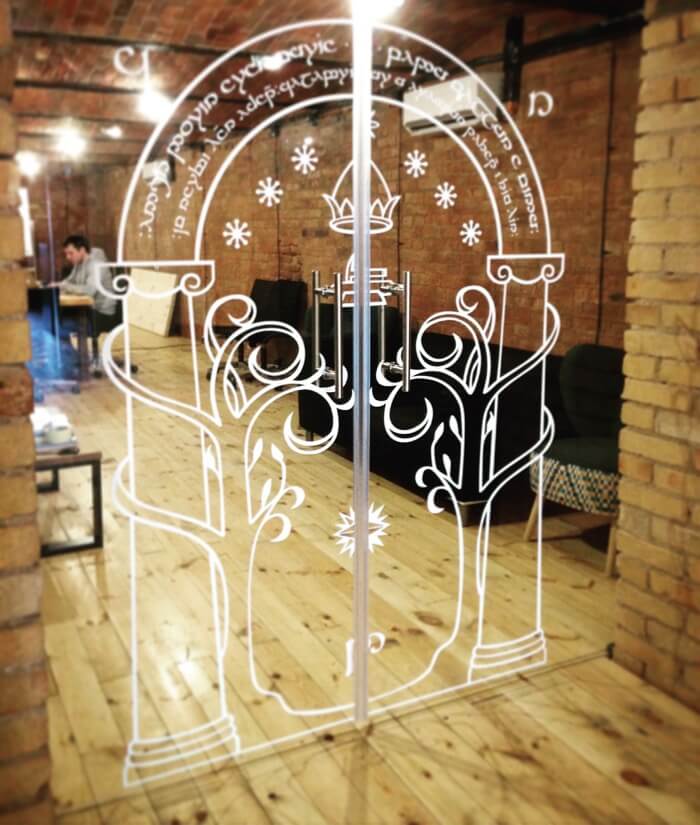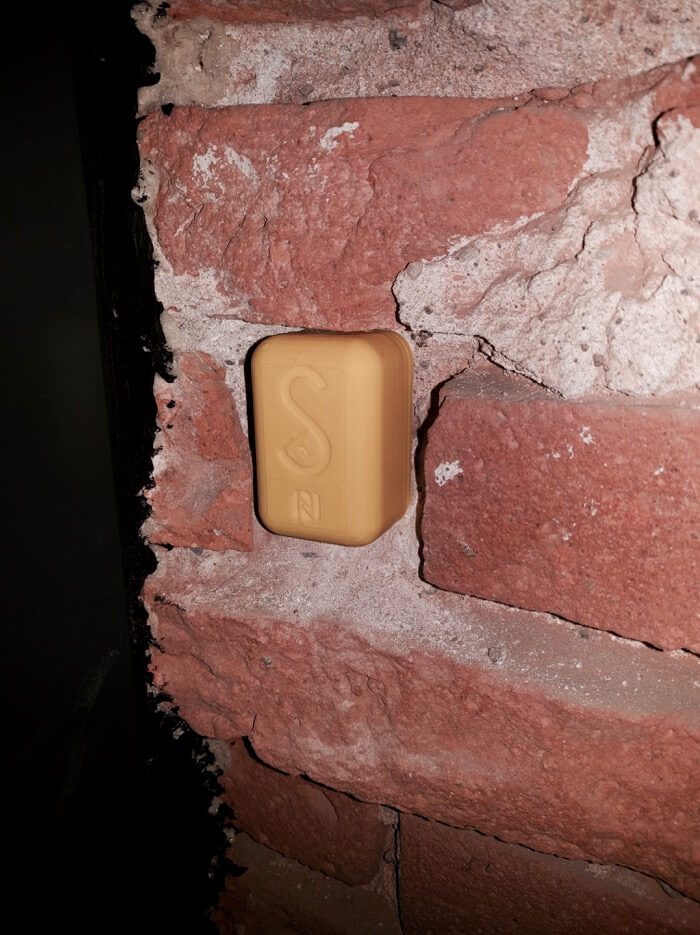
There is a murky, slightly scary underground area to our offices, set apart from our other workspaces which sprawl around a small courtyard. The cellar is made of cold, imposing brick and has a ceiling which is so low that the taller guys in our offices have to stoop when they enter. We call it Moria, after the doomed mine of the dwarves in Lord of the Rings. There is even a painting of the entrance to the mine on the doors.

It sounds like a dismal and dingy place but it is the area of the company that everyone loves. Why? Because it is where all of the cool stuff is. Table football, consoles, VR headsets… there is no Balrog lurking in our Moria.
Unfortunately, with so many people coming and going, it posed the very real problem of security. We couldn’t make a set of keys for every one of our employees to lock up this separate area when they left. This meant that, when nobody was there, the expensive equipment and priceless know-how we left unattended could be spirited away.
Of course, there are any number of simple fixes to this problem, but we are a tech solutions company and we wanted to make our own life a bit harder in order to build a solution that would perhaps make the world a little easier.
As part of our hackathon event, we challenged teams to find a great solution to this and other problems in our daily working lives. Within 48 hours we had a simple working tool from the Android and iOS development teams that excited us enough to task them with taking it further. The app was given the name Sesame, after the password in the story of Ali Baba and the 40 Thieves.
The solution
That first solution was a particle fitted into the electromagnetic door lock which acted as a circuit-breaker. To activate it there was a Bluetooth beacon fitted to the door which showed up on a mobile phone app when it was close enough to the door to be recognised. The door would automatically open once someone approached it.
And it worked… well, sort of. It opened doors but there were all of the typical teething problems. Too many doors in close proximity meant the app could not recognise which one to open. The original particle burnt out quite spectacularly. We had some weird issues with the batteries. And there was no housing for the whole system.

One step at a time, over the course of half a year, solutions to each of these issues were developed. The hardware was improved by wiring the system directly into the main electrical supply and building a custom casing using our 3D printer. The software, like all good software, is a never-ending work in progress… It is now at the point that different doors can be detected and opened at will by any person with the mobile app. A single touch of the icon on a smartphone deactivates the door lock for 5 seconds. Security is embedded by only allowing access to the app to those with a company email address. We have even added fun elements like different icons for each room and a Gandalf-like retort of “You shall not pass” when the door to Moria cannot be unlocked.

Where next?
The app is a good example of the kind of bespoke solutions we are developing for startups. We are challenging our teams to look at small and big issues and come up with technology that works for a specific for businesses need. If you think that we could help your business with a tailored solution to a tricky problem, we’d love to hear from you.
As for the future of Sesame, we are looking at ways to get it to market for companies the world over. The administration, security, and software side of the solution are well on track. The hurdle is rather on the hardware side. Manufacturing and shipping the systems is the first issue, followed by installation and ongoing maintenance as time goes by. However, having come so far in just 6 months, we are sure that it won’t be long before we take Sesame to the market place.
And when we think about the capabilities of the product itself, it goes way beyond security. The fact that each user unlocks the door with a specific device means that it would be easy for companies to collect and collate data on the flow of movement of people around the workplace and then better design office spaces and allocate resources based on need. This is just one of the ways in which we see Sesame opening doors to better business.
Timothy Clayton
Graphics by Anna Langiewicz





